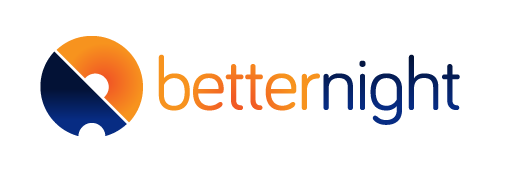Empowering Diabetes Educators: Building an Effective Sleep Apnea Screening Program
As a diabetes educator, your role in managing patient health is vital. While the American Diabetes Association Standards of Care recommend sleep disorder screenings, some physicians do not initiate the screening in their practices.
Diabetes Educators and Endocrinologists can work together to address sleep apnea in their patients with diabetes. This team approach can lead to better diabetes control, improved overall health, and a delay or prevention of complications.
This guide empowers Diabetes Educators to implement a Sleep Apnea Screening Program with their partner physicians. Integrating BetterNight’s comprehensive sleep apnea solution makes programs more effective with minimal burden on you and your partnering physicians. Let’s get started!
Step 1: Initial Collaboration & Planning
Collaborate with Endocrinology
Begin by consulting with an Endocrinologist to discuss the integration of a sleep apnea screening program into the diabetes care plan. Highlight how this program can benefit patients by improving glycemic control and how poor sleep quality affects overall health.
Objective Setting
Work together to define clear objectives and goals for the screening program. These should include identifying the target patient population for a pilot program, setting expected outcomes, and establishing metrics to measure success.
Step 2: Sleep Apnea Screening Program Structure
Developing a clear and organized framework is essential to ensure the seamless implementation and management of the sleep apnea screening program.
Identify Target Patient Population: Focus on high-risk patients, such as those with poor glycemic control (HbA1c > 7%), obesity, or symptoms of sleep apnea (snoring, daytime fatigue).
Start with a pilot group of patients over a set time for initial implementation.
Commit to evaluating success by documenting criteria: aim to improve HbA1c levels by 0.5-1% within 6 months and patient-reported sleep quality and reduce daytime fatigue.
Patient survey collection: early detection and increase in treatment rates of sleep apnea among diabetic patients
Evaluate the number of new sleep apnea diagnoses and subsequent treatment plans initiated.
Discuss the patient referral pathway. See “Setting up the Patient Referral Pathway” section below
Be sure to refer to established guidelines and successful models from the American Academy of Sleep Medicine and the American Diabetes Association.
Step 3: Sleep Apnea Resources
Gather resources like the STOP-Bang questionnaire and Epworth Sleepiness Scale, along with patient educational materials, to streamline the diagnosis and treatment of sleep apnea. Educate patients on the importance of screening, its impact on diabetes management, and what to expect during the process to encourage participation and adherence.
The STOP-Bang questionnaire is a concise, effective, and reliable OSA screening tool. It can facilitate the efficient allocation of resources in both diagnosing and treating previously unrecognized sleep apnea.
How BetterNight can help: Our sleep apnea screener and BMI Reference chart card is an ideal tool for routine patient education and as part of the Screener program.
Step 4: Setting up the Patient Referral Pathway
Once the questionnaire identifies a diabetic patient at risk for sleep apnea, they will be referred for diagnosis. The preferred and cost-effective option, especially post-COVID-19, is Home Sleep Testing (HST). Clinical studies have shown that HST can be just as effective as in-laboratory polysomnography for diagnosing obstructive sleep apnea (OSA) in mild and moderate sleep apnea. Some conditions and severe cases require polysomnography at a sleep lab.
Diabetes Educators CAN Refer Sleep Apnea Patients
Did you know that Diabetes Educators can refer patients for sleep apnea diagnosis without a Physician? It’s true—only with BetterNight! Our end-to-end sleep apnea solution's first step is a consultation with a Board-Certified Sleep Physician who refers for the HST. Your partnering Endocrinologists do not have the burden of referring or managing their patients' sleep apnea.
How BetterNight can help: With nationwide coverage, BetterNight cares for over 80,000 patients annually – from the comforts of the patient’s home. Download the Consult Referral Form and start referring!
Step 5: Launch, Monitor and Evaluate Program
Launch a pilot program with a small patient group to refine processes, identify issues, and gather feedback from Endocrinology staff. Make necessary adjustments before scaling up.
Continuously evaluate the program's effectiveness through patient outcomes, referral rates, and feedback. Metrics like improved HbA1c levels and reduced fatigue will indicate success.
Sleep Apnea Screening Programs Success
BetterNight offers a streamlined and efficient solution for managing your patients with Sleep Apnea: screening, consultation, treatment and lifetime sleep coaching—all from one provider. Implementing a screening program with physicians like Endocrinologists and referring the rest of the patient care to BetterNight relieves any burden on the practice while maximizing patient outcomes.
Ready to build your program? Sign up to get your complimentary pack of screener cards to kick-start your success!

